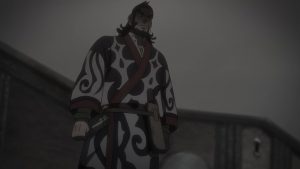 There would have been absolutely no reason to expect this season of Golden Kamuy to end less than brilliantly. It’s been stellar from the premiere onwards, and it ended on that same high – a powerful and elegiac conclusion to a near-perfect season. As good as the first two seasons were (very) I was in no way prepared for this sort of level up. Everything the series tried worked, and all the pieces fit together like a beautiful mosaic. Whatever the reason – increased budget, better source material – this was an unqualified success.
There would have been absolutely no reason to expect this season of Golden Kamuy to end less than brilliantly. It’s been stellar from the premiere onwards, and it ended on that same high – a powerful and elegiac conclusion to a near-perfect season. As good as the first two seasons were (very) I was in no way prepared for this sort of level up. Everything the series tried worked, and all the pieces fit together like a beautiful mosaic. Whatever the reason – increased budget, better source material – this was an unqualified success.
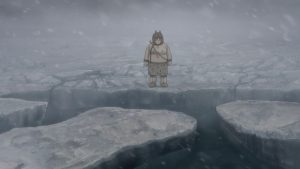 Consistency is a very important element of this. The first two runs for Golden Kamuy were not totally consistent, either in terms of narrative or production, and that in large measure was why before 2020 the anime never reached the level of masterpiece for me. This season was as close to impeccable as you could want. Every ep was brilliant, the pacing was razor-sharp, and the visuals and music vastly above what came before. As the story grew bigger it somehow became more personal and easier to comprehend at both the emotional and intellectual level. The planning here was high art, and everyone from director Nanba Hitoshi on down deserves immense praise.
Consistency is a very important element of this. The first two runs for Golden Kamuy were not totally consistent, either in terms of narrative or production, and that in large measure was why before 2020 the anime never reached the level of masterpiece for me. This season was as close to impeccable as you could want. Every ep was brilliant, the pacing was razor-sharp, and the visuals and music vastly above what came before. As the story grew bigger it somehow became more personal and easier to comprehend at both the emotional and intellectual level. The planning here was high art, and everyone from director Nanba Hitoshi on down deserves immense praise.
 It seemed pretty much inevitable after the orgy of violence last week that someone we knew well was going to die before this season ended. Ogata seemed like the most obvious candidate, but my money would have been on Kiroranke. In many respects this season could be said to be Kiro-chan’s story arc – it was his ghosts we were chasing, and it was he that Team Sugimoto was chasing. As with every major character in Golden Kamuy Noda-sensei made Kiroranke a complex and charismatic figure, someone whose death would be painful even if he was more or less a villain in the story (hell, Noda even made serial killers likeable).
It seemed pretty much inevitable after the orgy of violence last week that someone we knew well was going to die before this season ended. Ogata seemed like the most obvious candidate, but my money would have been on Kiroranke. In many respects this season could be said to be Kiro-chan’s story arc – it was his ghosts we were chasing, and it was he that Team Sugimoto was chasing. As with every major character in Golden Kamuy Noda-sensei made Kiroranke a complex and charismatic figure, someone whose death would be painful even if he was more or less a villain in the story (hell, Noda even made serial killers likeable).
 So – was Kiroranke a villain? As with most things GK, that doesn’t lend itself to easy answers. I think he fits the mold of the idealogical extremist to a T, and his actions reflected that. Men like him are charismatic and charming, and their words can be alluring. Kiro-chan knew how to use words to his own advantage, and there’s something in the depth of his belief in the cause that could be described as admirable. But such people are deadly dangerous to know, because friendship to them is just another tool to serve the greater cause. We still don’t know what he did what he did at Abashiri, and thanks to the end of this episode we may not for a while. But I think it’s safe to say that for Kiroranke, not even Wilk was bigger than the revolution.
So – was Kiroranke a villain? As with most things GK, that doesn’t lend itself to easy answers. I think he fits the mold of the idealogical extremist to a T, and his actions reflected that. Men like him are charismatic and charming, and their words can be alluring. Kiro-chan knew how to use words to his own advantage, and there’s something in the depth of his belief in the cause that could be described as admirable. But such people are deadly dangerous to know, because friendship to them is just another tool to serve the greater cause. We still don’t know what he did what he did at Abashiri, and thanks to the end of this episode we may not for a while. But I think it’s safe to say that for Kiroranke, not even Wilk was bigger than the revolution.
 A terrorist to the end, Kiroranke still tried to kill Lt. Koito with a bomb even after being stabbed in the throat (in a brilliantly depicted and brutal battle with Koito) and shot twice. Witnessing all this through binoculars, Sofia is so distraught and unmade that she has to make a hole in the ice and submerge her head to muffle her screams (another brilliant moment). Asirpa begs Koito and Tanigaki not to finish Kiroranke until she can ask the question she burns to ask, but she spends Kiro-chan’s last few moments giving him a measure of peace rather than ask it.
A terrorist to the end, Kiroranke still tried to kill Lt. Koito with a bomb even after being stabbed in the throat (in a brilliantly depicted and brutal battle with Koito) and shot twice. Witnessing all this through binoculars, Sofia is so distraught and unmade that she has to make a hole in the ice and submerge her head to muffle her screams (another brilliant moment). Asirpa begs Koito and Tanigaki not to finish Kiroranke until she can ask the question she burns to ask, but she spends Kiro-chan’s last few moments giving him a measure of peace rather than ask it.
 Ogata and Tsukishima are badly hurt, Ogata especially, and Sugimoto is desperate for him to survive – not just because of the secrets he knows, but to preserve Asirpa’s innocence as he sees it. The group returns to the Nivkh village at Ako – we hear yet another language which both Noda and the anime brought in native experts to assist with, a challenge given than only about 550 Nivkh speakers exist in the world today. Sugimoto’s plan to dress as Nivkh doesn’t fool the local doctor, a Russian war veteran – but he does agree (at gunpoint) to see the wounded. And he convinces Sugimoto that Ogata must be brought back to his clinic for surgery if he’s to have a chance to survive.
Ogata and Tsukishima are badly hurt, Ogata especially, and Sugimoto is desperate for him to survive – not just because of the secrets he knows, but to preserve Asirpa’s innocence as he sees it. The group returns to the Nivkh village at Ako – we hear yet another language which both Noda and the anime brought in native experts to assist with, a challenge given than only about 550 Nivkh speakers exist in the world today. Sugimoto’s plan to dress as Nivkh doesn’t fool the local doctor, a Russian war veteran – but he does agree (at gunpoint) to see the wounded. And he convinces Sugimoto that Ogata must be brought back to his clinic for surgery if he’s to have a chance to survive.
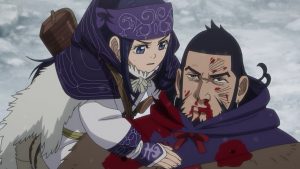 It’s a testament to how artfully this was all pieced together that the last two episodes haven’t felt rushed despite an enormous amount of plot. Svetlana’s story even gets a resolution (Tsukishima’s decency really shines through here). She teams up with Gansoku, timely met on the ice, to head back to Russia (spinoff or OVA please), though not before Tsukishima insists she give him a letter for her parents. The Nivkh serve the party mosu, and Asirpa muses on how this trip has broadened her view of the world and the Ainu’s place in it while Koito dreams of showing her off to his father and Tsurumi. But as its so often the case, the ending is thoroughly commandeered by Ogata.
It’s a testament to how artfully this was all pieced together that the last two episodes haven’t felt rushed despite an enormous amount of plot. Svetlana’s story even gets a resolution (Tsukishima’s decency really shines through here). She teams up with Gansoku, timely met on the ice, to head back to Russia (spinoff or OVA please), though not before Tsukishima insists she give him a letter for her parents. The Nivkh serve the party mosu, and Asirpa muses on how this trip has broadened her view of the world and the Ainu’s place in it while Koito dreams of showing her off to his father and Tsurumi. But as its so often the case, the ending is thoroughly commandeered by Ogata.
 Ogata is easily the most enigmatic character in this amazing cast, and as straightforward as some of it are, that’s still a very high bar. He’s a force of nature, a genius of death, and his fate and Sugimoto’s are clearly still linked. Ogata (the fact that he can speak Russian is an intriguing twist) is at the heart of the mystery in so many ways, and Golden Kamuy’s ultimate wild card, aligned with no one. Sugimoto, by contrast, has very clear motivation. He’ll protect Asirpa at any cost, especially from being at the center of a war. That means that whatever temporary allegiances he forms, his interests ultimately don’t overlap with any of the series’ power brokers. And I think they know that very well – this is a marriage of convenience if ever there was one.
Ogata is easily the most enigmatic character in this amazing cast, and as straightforward as some of it are, that’s still a very high bar. He’s a force of nature, a genius of death, and his fate and Sugimoto’s are clearly still linked. Ogata (the fact that he can speak Russian is an intriguing twist) is at the heart of the mystery in so many ways, and Golden Kamuy’s ultimate wild card, aligned with no one. Sugimoto, by contrast, has very clear motivation. He’ll protect Asirpa at any cost, especially from being at the center of a war. That means that whatever temporary allegiances he forms, his interests ultimately don’t overlap with any of the series’ power brokers. And I think they know that very well – this is a marriage of convenience if ever there was one.
 Golden Kamuy 3rd Season managed the elusive double of being both an entirely satisfying self-contained story and a fantastic tease for the rest of the series. Given how superb it was it would be a blow indeed to see this story not continued on-screen – it seems to only be getting better and better. We can’t know for certain whether a continuation is coming, but I strongly suspect it will be. This show has been a commercial success, to a degree that’s greatly surprised me. The manga continues to be a very good seller. At the moment there would probably be enough material for a fourth season – but just barely. I suspect we’ll be seeing more Golden Kamuy sometime in 2022, and I’ll be counting the days – and biting my fingernails until we get an official confirmation of that. In a thoroughly depressing anime year, thank goodness for Golden Kamuy.
Golden Kamuy 3rd Season managed the elusive double of being both an entirely satisfying self-contained story and a fantastic tease for the rest of the series. Given how superb it was it would be a blow indeed to see this story not continued on-screen – it seems to only be getting better and better. We can’t know for certain whether a continuation is coming, but I strongly suspect it will be. This show has been a commercial success, to a degree that’s greatly surprised me. The manga continues to be a very good seller. At the moment there would probably be enough material for a fourth season – but just barely. I suspect we’ll be seeing more Golden Kamuy sometime in 2022, and I’ll be counting the days – and biting my fingernails until we get an official confirmation of that. In a thoroughly depressing anime year, thank goodness for Golden Kamuy.





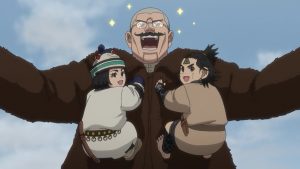
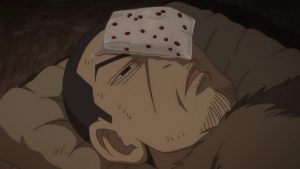
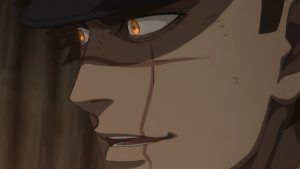

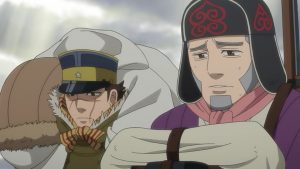

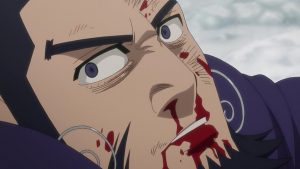

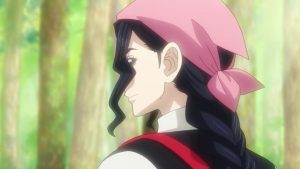


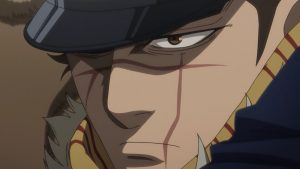



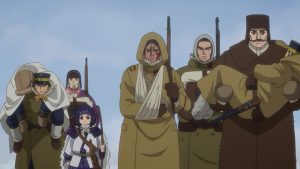

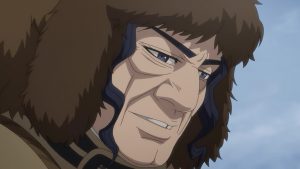
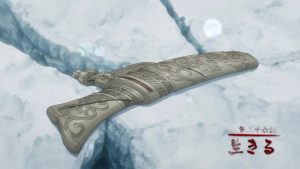
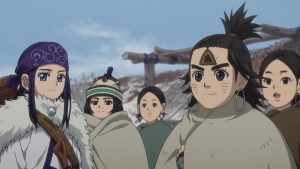


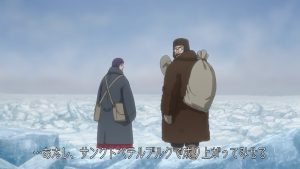

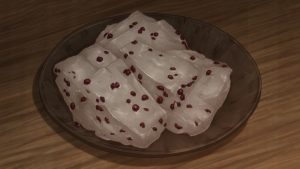
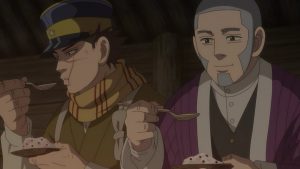

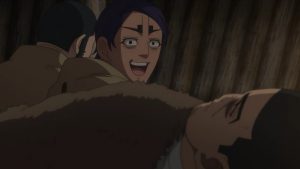


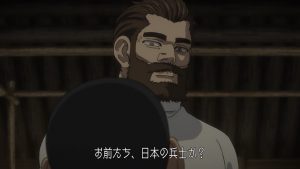
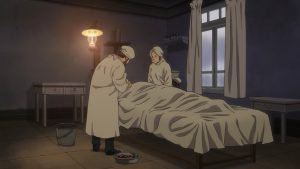


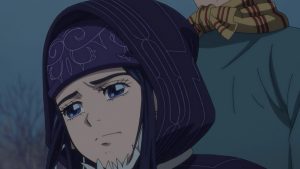

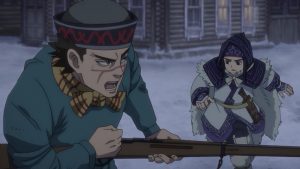
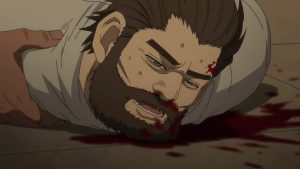

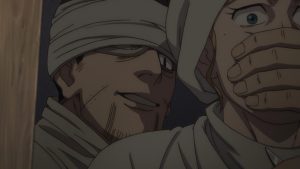

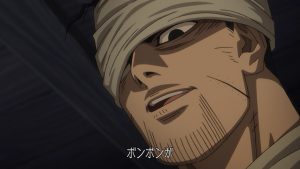

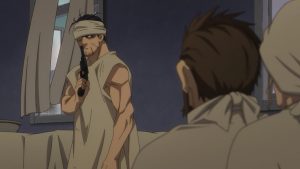

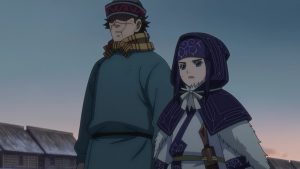


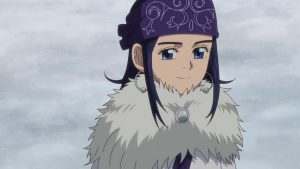
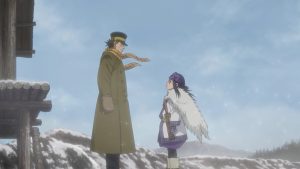


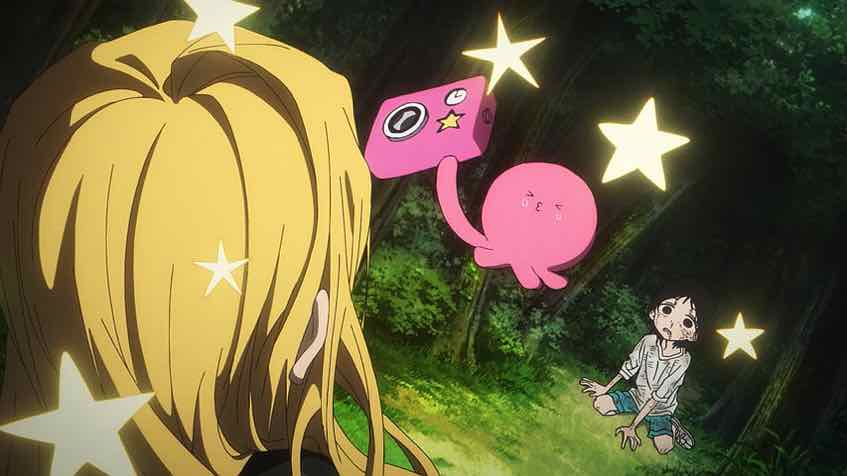
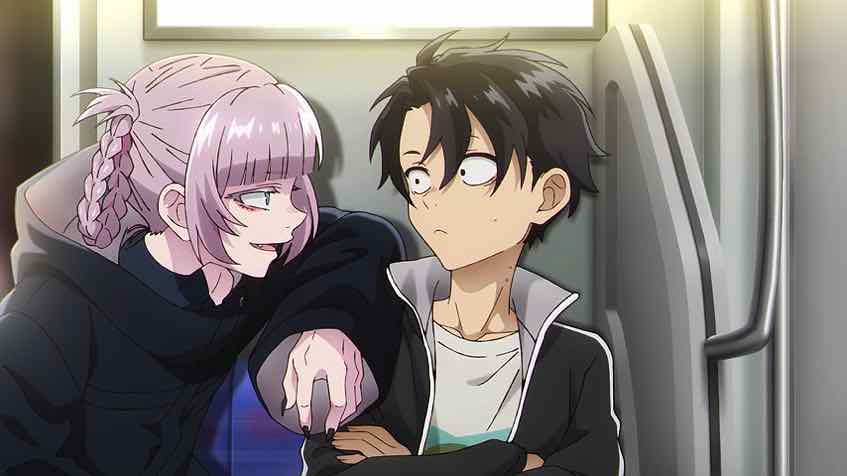
Scampi
December 22, 2020 at 10:08 pmUn…unqualified success? Enzo please XD. Also fix “whole Koito dreams of” while you’re at it.
Guardian Enzo
December 22, 2020 at 10:18 pmIf 9 paragraphs of explanation (and 11 prior posts) doesn’t do it, I hardly think a comment will persuade you. You have your opinion, I have mine.
Scampi
December 23, 2020 at 1:19 amWoah, I think there’s just a misunderstanding, cos I’m guessin we have a different idea of what unqualified means in the paragraph. Are you referring to commercial success? Because I don’t see what GK is not qualifying for right now. It looks quite negative.
Scampi
December 23, 2020 at 1:22 amWoah, not meaning harm here. I’m guessing we have a different idea of what unqualifed means in the paragraph, because it’s sounding negative to me here. Are your referring to commercial success or something? Personally I don’t see what GK is not qualifying for, it’s great.
Scampi
December 23, 2020 at 1:42 amNever mind, just found out it means total success. My bad XD
Guardian Enzo
December 23, 2020 at 8:58 amSorry! I thought you were taking issue with my description rather than asking for a clarification of the term itself. As you said, it does mean “without qualifications” – i.e., an all-out success.
Scampi
December 23, 2020 at 12:02 pmThanks! Enzo you really have a way with words, that’s why I keep coming back here, because reading you praise anime makes me happy, and I always learn some new words and phrases, like the phrase albatross around someone’s neck always made me chuckle because of the image it evokes XD
Orin
December 23, 2020 at 9:04 amIt’s unfair how much better Golden Kamuy is compared to the rest of the field this year. As you’ve noted several times, every season so far has been clearly better than the previous one. So if and when the fourth season comes out, improving on this already magnificent series would be a preposterous feat. Thank goodness for Golden Kamuy indeed.
Guardian Enzo
December 23, 2020 at 10:59 amIt’s not remotely close.
I’m hoping ’22. I do believe it will happen, but with anime nothing outside of isekai, idols and CTDCT sequels are a guarantee.
Elia Notari
December 23, 2020 at 9:30 pmWell Enzo, you might have given us your #1 spot for the year!!!!!
I mean, it’s hardly a surprise tbh
Guardian Enzo
December 23, 2020 at 9:37 pmWell, everyone thought they knew what my #1 spot for the decade was going to be and look how that turned out!
Never underestimate the power of baseball boys and toilet ghosts and con men.
Red
December 23, 2020 at 12:18 pmJust caught up to the manga where the season ends, and I must say this adaptation is more superb compared even to the manga since it focused more on the retrieval of Asirpa and as such minimized the appearance of Hijikata’s group (which are still in Hokkaido) so it felt more cohesive and complete compared to earlier seasons where they juggled the narrative between the 3 groups and makes them seem more episodic in nature. Also, adding scenes not in the manga (e.g. Sofia’s underwater scream) along with the consistently great visuals, sound, and animation and the feeling that every episode is a cliffhanger when the opening riff of the ending theme begins playing, I’m really grateful to Geno Studio and the quality of their work in adapting Noda-sensei’s story.
Will you be reading the manga? Restarting from chapter 1, there are various trivia about Ainu culture and media references, not to mention additional characters and side arcs not included/skipped in the anime and ovas.
Guardian Enzo
December 23, 2020 at 12:25 pmThat’s a possibility at some point. It’s a matter of making the time.
I was aware that a major Hijikata arc (ch. 171-176 I believe) was cut. I agree, it was probably a good decision for the sake of cohesion. It also gives the anime some additional material either for a 4th season or an OVA.